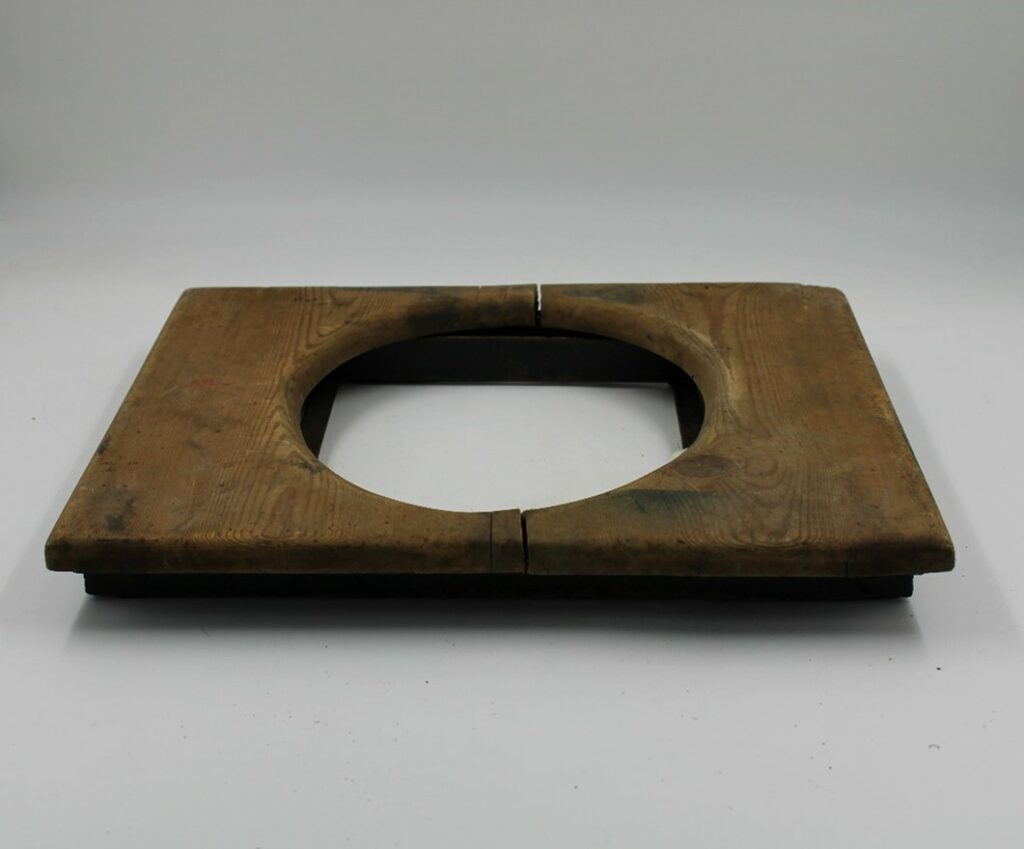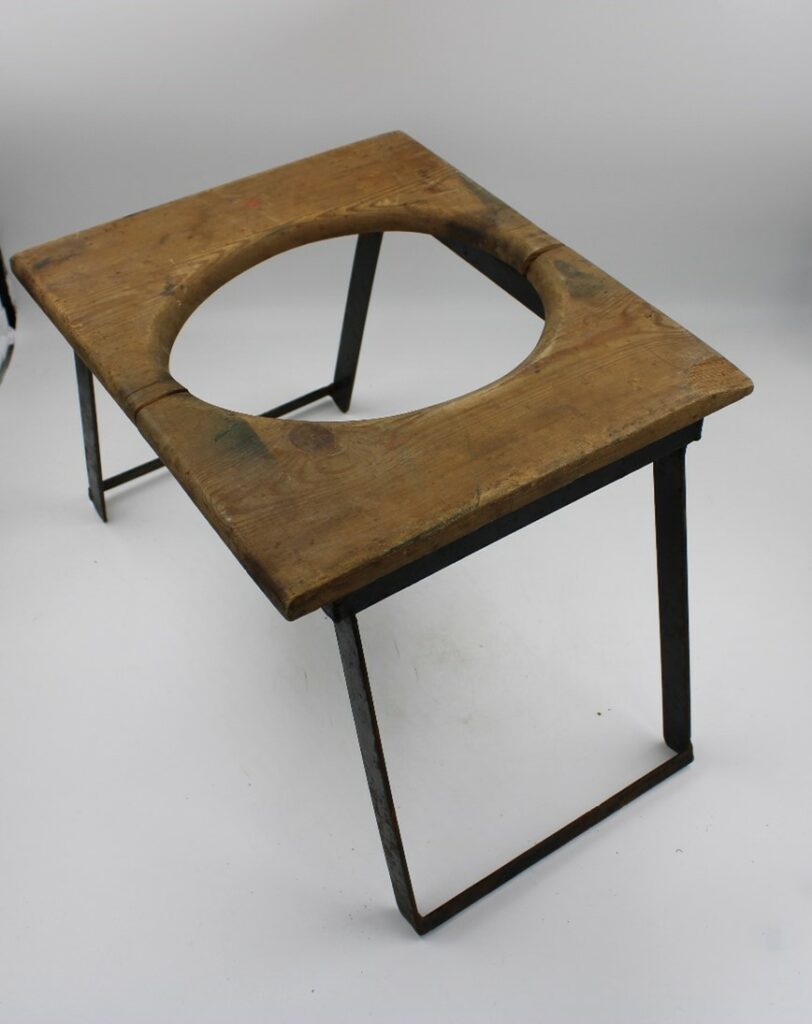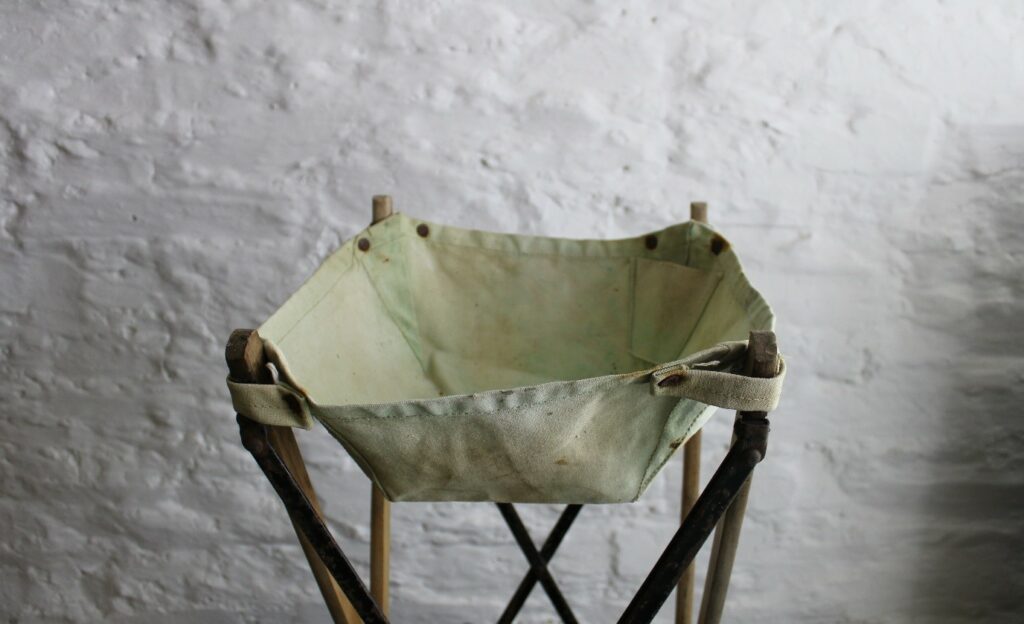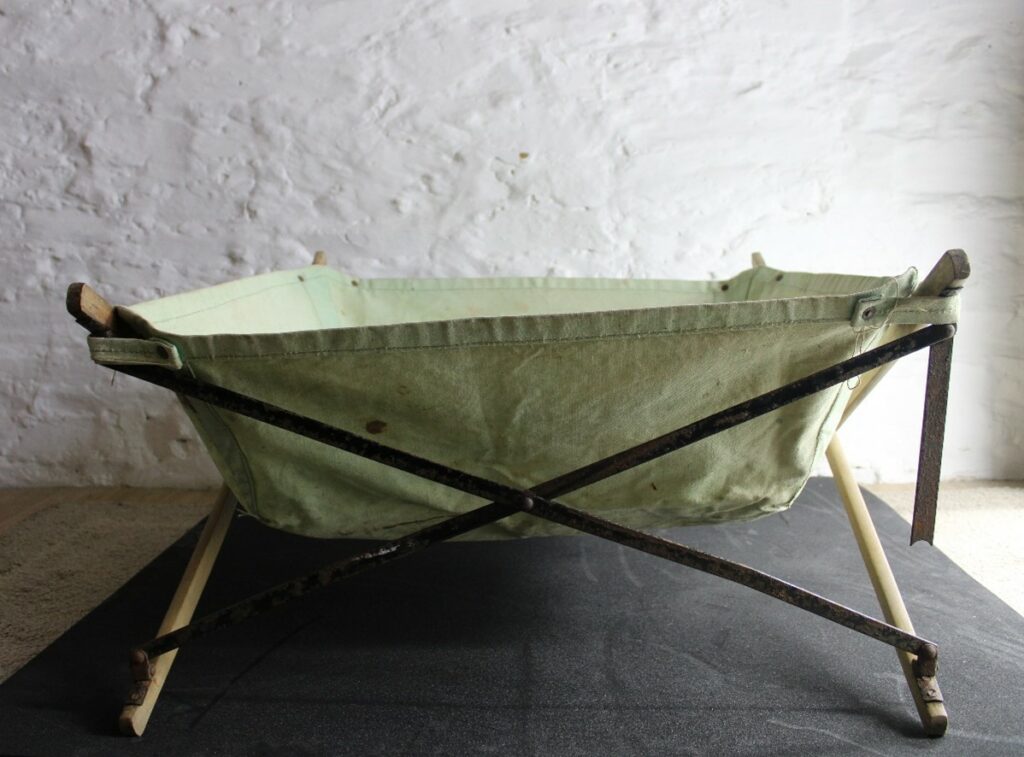I am the new Trainee Curator at Bodmin Keep and have spent the past two weeks getting to know the collection. When organising some boxes in the collection store I came across this folding toilet seat from an officer’s camp kit circa World War One. I was intrigued to find out more about this personal item as the details of a soldier’s daily routine are often overlooked. The wooden seat is supported by a metal frame with folding legs making it easily portable when collapsed. Something so necessary has been made to be portable and practical in design whilst also providing some dignity to the user in a situation where privacy was hard to come by in particular in the latrine pits provided for the standard soldier.


Folding toilet seat unfolded
This element of luxury would likely not have made its way into the trenches as it was not an essential, however, there were certain hygiene conditions the trenches were expected to be kept in for the sake of the troop’s health. The most sanitary system for the extreme and temporary site of the frontline was a bucket system. The company ‘pioneer’ would empty the buckets (sometimes large biscuit tins) nightly and liberally treat the area with chloride of lime – a scent that became synonymous with trench living. Places to empty the buckets were designated as far as practically possible from the trenches.

Camp Travel Basin
Very little is known about this object as, as aforementioned, the more ‘mundane’ routines and objects are less likely to be treasured, yet they are often the stories people connect the most with, bearing an element of relatability. However, I did find some similar folding equipment in our collection whilst researching – a travel bath and basin. Both made of canvas, the two square lining vessels hook over the legs of the folding stand, raised up off the floor to provide a container for water. The sink is small enough in area that the wooden frame holds at a comfortable standing height. This frame can be expanded to cater for the larger canvas bath lining, lowering to a suitable bath height. Utilising the same foldable wooden frame is an efficient use of space and the canvas is flexible enough to be folded flat, creating a portable bathing kit for an officer whilst camping or based in barracks. An officer would bathe in privacy in a cubicle in the Divisional Bath House in a canvas bath such as this or a narrow tank or wooden tub.

Camp Travel Bath
However, for the average soldier in World War One, bathing would have been an infrequent occurrence, usually offered when returning to ‘billets’ (living quarters for soldiers in barracks or garrisons when not on combat duty). They would climb into boiling communal tubs to wash away the mud, lice and enjoy a fresh shave whilst their uniform was steam-cleaned. Nevertheless, a story of goodwill emerged from our collection about the 6th Battalion of the D.C.L.I. Between September 1914 and February 1915, they camped at Pendennis Castle, Falmouth with no bathing arrangements. The Reverend Leonard Haxell, therefore, organised baths for the troops, starting in the basement of the Bank House Hotel with two hip baths and a zinc tub and gradually increasing the scope of the scheme. The people of Falmouth subscribed towards the cost and over 3,655 baths were given during the period. Each soldier was given 27/8 gallons of hot water, as much cold water as he liked, a soap, sponge, nail brush, and a towel!
Written by Fran Singleton MA, Trainee Curator at Bodmin Keep 2022


